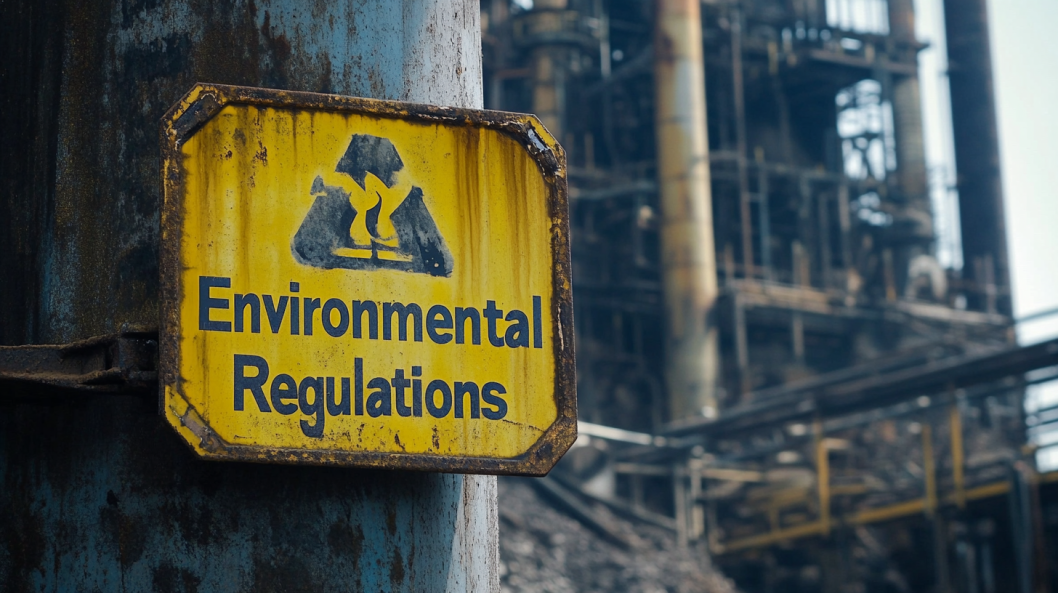Environmental regulations are more than just guidelines for reducing pollution; they are integral to ensuring workplace safety. Compliance with these regulations is crucial as it helps businesses prevent legal repercussions and promotes a culture of safety, accountability, and environmental stewardship. By learning and adhering to these standards, companies can proactively address potential hazards, ensure a safer working environment, and enhance operational efficiencies, ultimately benefiting employees and employers.
An expert emphasises that effective environmental management is crucial for cultivating safer and healthier work environments while enhancing operational efficiencies. This dual benefit creates a positive impact for both employees and employers. By recognising the significance of environmental regulations on workplace safety, businesses are positioned to comply with legal requirements and leverage these regulations strategically. This approach enables organizations to foster a more secure, efficient, and sustainable workplace, ensuring long-term success and well-being for all stakeholders. This blog post explores how environmental regulations impact workplace safety and highlights key overlapping areas.
1. Understanding Environmental Regulations
Environmental regulations are designed to protect natural resources and human health by controlling pollution and managing waste. They cover various issues, from air and water quality to hazardous waste management. In the workplace, these regulations often translate into specific practices and procedures that must be followed to comply with legal standards. The Environmental Protection Act of 1990 is a fundamental piece of legislation that mandates businesses to exercise a duty of care in managing waste. It compels companies to proactively safeguard human health and the environment by ensuring proper waste disposal and implementing effective pollution control practices.
2. How Environmental Regulations Enhance Workplace Safety
- Hazardous Materials Management: Regulations such as the Resource Conservation and Recovery Act (RCRA) require proper handling, storage, and disposal of hazardous materials. By ensuring these materials are managed safely, companies reduce the risk of exposure to harmful substances, thereby enhancing worker safety.
- Air Quality Standards: The Clean Air Act (CAA) limits industrial-process emissions. Compliance with these standards helps protect the environment and reduces the risk of respiratory issues and other health problems for employees exposed to airborne pollutants.
- Water Quality Regulations: The Clean Water Act (CWA) regulates discharges into water bodies. By controlling industrial waste that may enter waterways, these regulations prevent contamination that could affect workers involved in water-based processes or those working near water sources.
3. Case Studies: Real-World Impact
- Manufacturing Sector: Adherence to air quality standards has improved ventilation systems and reduced airborne contaminants in a manufacturing plant. This not only meets environmental requirements but also creates a healthier work environment, reducing the incidence of respiratory illnesses among employees.
- Chemical Industry: For companies handling chemicals, stringent waste management regulations ensure that hazardous substances are safely disposed of. This reduces the risk of spills or leaks, which can pose significant safety hazards to workers.
4. Challenges and Solutions
- Compliance Costs: Meeting environmental regulations can be costly, particularly for small businesses. However, investing in efficient technologies and practices can lead to long-term savings and improve workplace safety. Grants and incentives for green technologies can also help offset initial costs.
- Training and Education: Ensuring employees are well-trained in environmental safety practices is essential. Regular training sessions on handling hazardous materials and understanding regulatory requirements can significantly reduce the risk of accidents and improve overall safety.
5. The Future of Environmental Regulations and Workplace Safety
As environmental concerns continue to evolve, so will the regulations that govern them. More stringent standards and innovative approaches to managing environmental and safety issues will likely be introduced. In response, companies need to implement proactive environmental procedures in the workplace, such as regular assessments, waste reduction strategies, energy-efficient practices, and employee training. Companies that adopt these measures will ensure compliance and foster a safer, more sustainable workplace.
Environmental regulations are critical in enhancing workplace safety by managing hazardous materials, controlling emissions, and ensuring water quality. While complying with these regulations can present challenges, the benefits—from improved employee health to long-term cost savings—are well worth the effort. By staying informed and proactive, businesses can navigate the complex landscape of environmental regulations and create a safer, more sustainable working environment.





